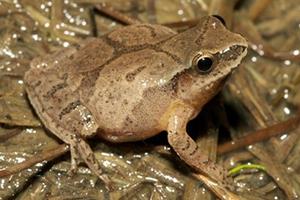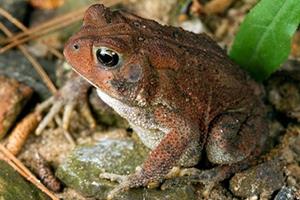Amphibian Awareness
By Bill Steinmetz
February, 2020
Around 28 species of native frogs and toads exist in North Carolina. There are no scientific differences between frogs and toads as they belong to the same order (Anura), but different families. There are four true toad species (Bufonidae family) and eight true frog species (Ranidae family) in North Carolina. The remaining frog and toad species, including cricket frogs, chorus frogs, treefrogs, and narrow mouth toads, are relatives from various other families. There are three native species listed as endangered: Gopher Frog, Ornate Chorus Frog, River Frog. All three of these frogs are native to southeastern North Carolina.
At first glance frogs and toads are quite similar in appearance. There is also similarity in the ability to make sounds, which is known as calling. Both spawn in water and have a diet primarily consisting of insects, worms, and spiders. However, as seen in the following table, there are some notable differences that can help with identification.
| Frogs | Toads |
|---|---|
| Remain near water | Typically found away from water |
| Transportation on land is via hopping | More likely to crawl rather than hop |
| Smooth, moist skin | Rough, bumpy skin |
| Famous frog: Kermit the Frog from the Muppets | Famous toad: Mr. Toad from “Frog and Toad” books |
The sounds that male frogs and toads make when calling for mates or vocalizing their territory is another form of identification. In North Carolina, males from several species of frogs and toads begin calling for mates in late winter. These early callers commonly include the Spring Peeper (Frog) and the American Toad. Both of these species can be seasonally heard on the NIEHS campus. The Peeper is usually the first of the frogs and toads to begin calling. Each species has a distinct call that is performed in a chorus with the goal to be heard above the other choir members. The chorus is actually a series of solos with all participants taking turns and singing as loud as possible. As the weather warms through spring, other frog and toad species have their turn at calling.
(Bill Steinmetz is the Environmental Compliance Officer at NIEHS in the Safety and Environmental Protection Branch.)





